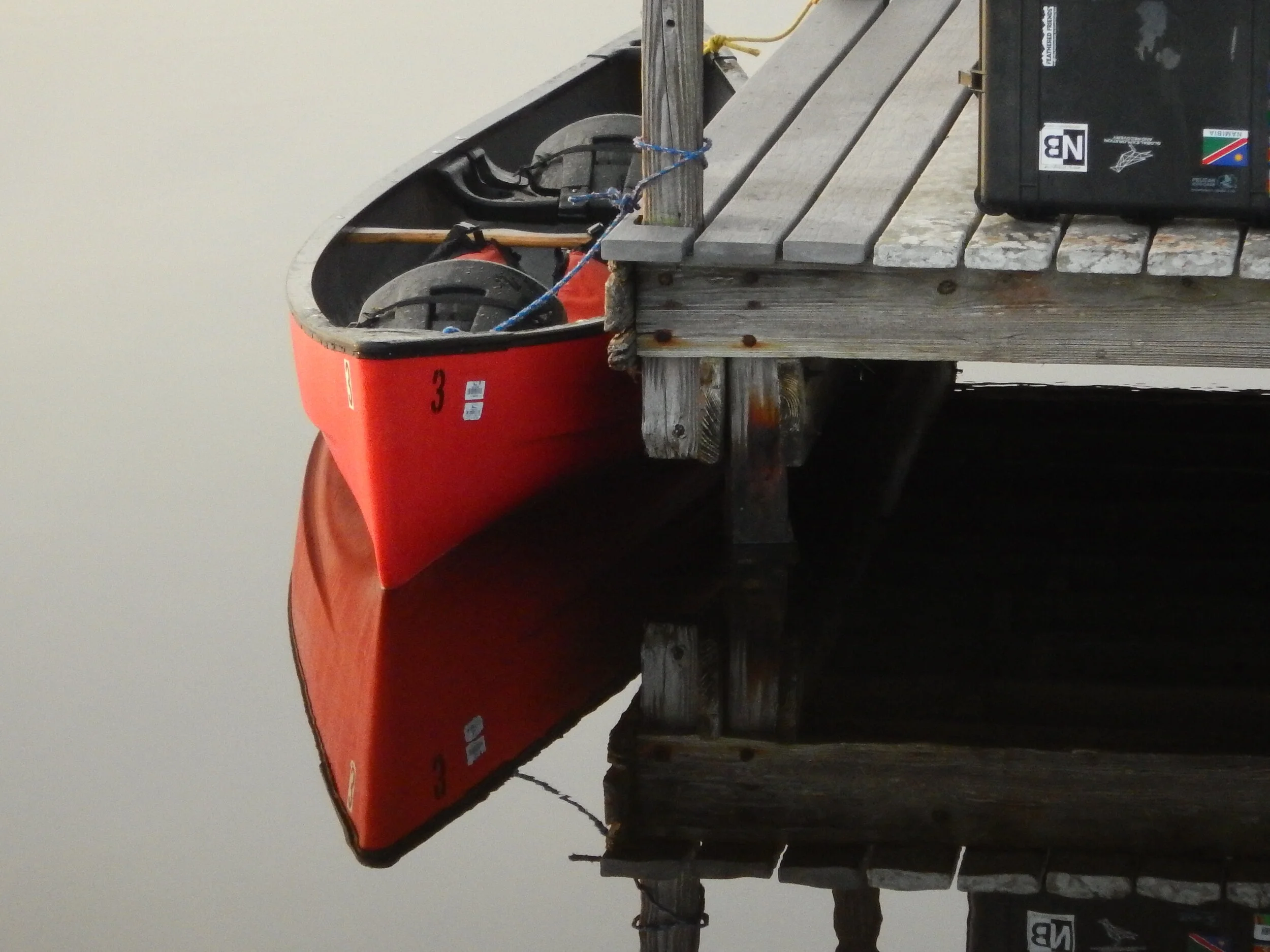Keeping cool in February in the United States is not usually a challenge. When you find yourself paddling a canoe through a maze of mangrove tunnels in the Everglades National Park, however, the humid heat of the swamp sticks to you like a steamy blanket. My wife, Jenna, and I were navigating the labyrinthine channels of the Hell’s Bay canoe trail at the outset of a new adventure. Embarking for the first time on a backcountry canoe expedition, we were excited about the new experience and anxious that we would reach our camp by sundown. The ranger who gave us our permit said that it takes most people six hours to reach Pearl Bay. Our destination was even further away and we had less daylight than that in which to cover the distance. No problem for a couple of newbies, right?
This boat-sized gap in the mangroves is the start of the Hell’s Bay water trail. Photo by Jenna Rizzo.
Jenna and I have years of experience backpacking, mountaineering, rafting, climbing, and other flavors of wilderness exploration, but we had never taken a multi-day canoe trip. It sounded like the ideal combination of human-powered access to pristine, isolated landscapes combined with the carrying capacity of car camping (aka overlanding). Any backcountry excursion involving a cooler is a luxury outing in my book.
The confines of the trail make for a snug fit. Photo by Nicholas Bratton.
Figuring out which winding channels to follow through the mangrove swamp would have been challenging if not for the series of numbered, white plastic pipes placed along the way as markers. Even with these routefinding aides we occasionally paddled up the wrong fork. Ducking under branches, scraping the canoe around hairpin turns, and feeling completely disoriented, our progress towards camp was agonizingly slow. Would we be sleeping in the boat?
After two hours of weaving through the mangroves we emerged into a series of broader ponds and more open water. Passing the Lard Can campsite across a bay, we got a solid sense of our position. With primarily open water ahead of us, we knew we could cover the remaining distance quickly. Exiting Pearl Bay only two and a half hours after leaving the trailhead we relaxed, confident that we’d reach our destination well before dark.
Wider channels made for easier going and faster progress. Photo by Jenna Rizzo.
Another hour of paddling across open water and weaving through a final channel led us to Hell’s Bay. Our campsite emerged from behind a clump of mangroves: the Hell’s Bay chickee. I had never heard the term before researching this trip. Curious how one camps in a mangrove swamp, I discovered the marvel of the chickee – a raised platform above the water, covered by a roof, open on all sides, and equipped with a portable (bolted-down) toilet. The word and design originated from the open-sided shelters used by the Miccosukee tribe who lived here for millennia before Europeans arrived. Ingenious in its simplicity, this was a brilliant camping arrangement. Each chickee has two tent platforms. Given the late hour, we wondered if we would have the entire place to ourselves.
Hell’s Bay chickee awaits the weary paddler. Photo by Nicholas Bratton.
Jenna and I unloaded the canoe, pitched our tent, and set up our kitchen on the empty platform. We relaxed after our paddle with cold beers and sat in silence, slowing down to match the stillness of Hell’s Bay. Realizing we hadn’t been this remote in the wilderness since the pandemic started, the beauty of the solitude was all the more savory. As the glow of the sun sank below the mangrove fringe of the bay the Everglades mosquito army descended on us and we dove into the tent for a muggy night of sleep.
Home sweet home, but watch your step. Photo by Jenna Rizzo.
The reward for hard work. Photo by Jenna Rizzo.
I’ve camped in worse places. Photo by Nicholas Bratton.
Dawn in Hell’s Bay brought a warm sunrise and gentle breezes over the mirror pond of the water. We made a relaxing start, enjoying tea on the vacant platform and watching the clouds gather as a southerly wind grew in strength. Knowing a chance of storms was in the forecast, we delayed taking down the tent. With scant warning, a band of wind-lashed rain blew across the bay and we took shelter as it battered the chickee. Thunder rolled in the distance, but didn’t come close enough to make us worry. We only had two miles to cover that day, so waiting out the weather was no hindrance to our plans.
Sunrise over Hell’s Bay. Photo by Nicholas Bratton.
The canoe is a state of mind as much as it is a conveyance. Photo by Nicholas Bratton.
The rain subsided and we packed the canoe for the return journey to Pearl Bay. With a watchful eye on heavy clouds we paddled back in under 40 minutes, thankful that the threat didn’t materialize. The Pearl Bay chickee was newer and more spacious than its Hell’s Bay counterpart. It featured modern conveniences like guard rails and mooring cleats, and was even ADA accessible. We set up our tent and met our neighbor, York, who had paddled out solo in his kayak. The wind whipped across the bay and we anchored our tent securely to the platform, loaning extra cord to York for his tent.
A new and enhanced chickee at Pearl Bay has all the amenities you need. Photo by Nicholas Bratton.
We whiled away our afternoon reading, writing, and watching the shifting light across the water. The wind persisted, though not as strong, and kept the mosquitoes in check enough to watch the stars come out in the darkening sky. In the morning we had guests. Three dolphins swam through Pearl Bay, two of them passing within a few feet of our chickee. It was such a peaceful setting we didn’t want to leave, but park regulations allow only one night’s stay at each campsite. Knowing we had a long trip back to Florida’s west coast, we packed up and pointed our cheery red canoe into a brisk headwind.
Early morning jaunt around the chickee. Photo by Jenna Rizzo.
So long and thanks for all the fish. Lousy photo by Nicholas Bratton.
By the time we entered the constriction of the mangrove channels Jenna and I had refined our canoe handling. Using rudder and draw strokes we negotiated the convoluted route without losing momentum. The return journey took us less time than the outbound trip and the noise of the approaching road brought sadness to the end of our paddle. We could have stayed out there another few days. Now we know for our next visit to plan for a longer expedition deeper into the Everglades. Past Hell’s Bay and beyond the signposts lies Lane Bay, the next challenge for a future outing.


